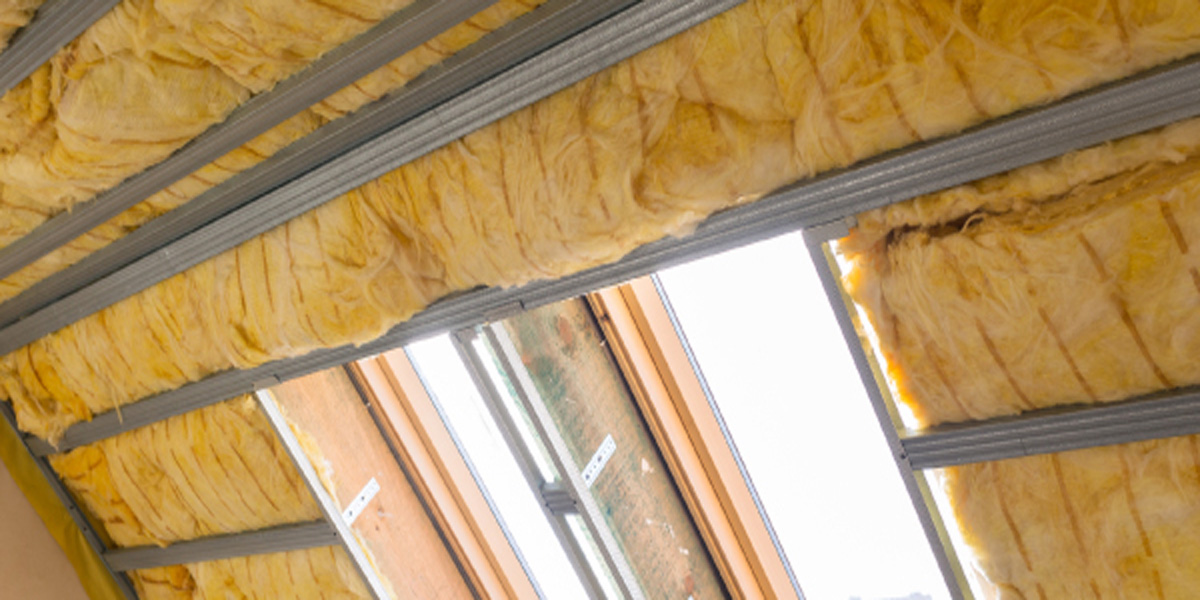Installing loft insulation is a fundamental step towards improving energy...
Read More- Benefit from 0% VAT on Installation
Room in Roof Insulation Grants
Room in roof insulation grants in the UK improve energy efficiency by insulating attic rooms. These grants cover installation costs, reduce heat loss, lower heating bills, and enhance comfort for eligible households, supporting sustainable and energy-efficient living conditions.
How Do Heating Insulation Grants Work?
Eligible households can receive heating grant funding, such as GBIS and ECO4, for different home insulation measures. These grants help improve energy efficiency by providing financial support for insulation upgrades, making homes warmer and reducing energy costs.

Eligibility Requirements
Grants are available to households that meet specific income and property criteria.

Application Process
Apply online or through a designated agency to check your eligibility.

Types of Insulation
Grants cover loft, cavity wall, and solid wall insulation measures.

Benefits of Insulation
Insulation reduces energy bills and improves home comfort.
What Defines a Room in Roof Space?
A room in the roof, or attic room, is identified by the presence of a fixed staircase providing access. Many older buildings with attic spaces were either not insulated or used outdated insulation methods that don’t meet current building standards.
Loft conversions from a previous generation often have inadequate insulation, making these spaces cold and costly to heat. Upgrading with quality modern insulation can improve the warmth and heat retention of both the attic room and the rooms below, while still allowing the roof space to be used for storage or additional living space.
What is Room in Roof Insulation?
Room in roof insulation involves attaching insulating batts (also known as blanket insulation) to the walls and the sloped portion of the ceiling in an attic or loft conversion. Pre-cut pieces of insulating material are fitted between the batts, and plasterboard is then installed over the insulation. The plasterboard is skimmed with plaster and can be decorated afterward. Alternatively, insulation boards may be slotted into the roof space behind the sloped ceiling.
For traditional loft spaces, insulation can be installed by laying rolls of glass fibre insulation on the loft floor. Room in roof insulation is designed to minimize disruption, and the entire process typically takes 1-2 days to complete.
Benefits of Room in Roof Insulation
Improved Comfort: Room in roof insulation keeps converted loft spaces warmer, making them more comfortable for living or storage.
Energy Efficiency: It prevents heat from escaping through the roof, helping to maintain a consistent temperature throughout your home.
Reduced Energy Bills: By retaining heat effectively, room in roof insulation lowers energy consumption, resulting in reduced heating costs.
Property Value: Enhances the value and desirability of your home by improving its energy efficiency and comfort levels.
Grants for Room in Roof Insulation
Room in roof insulation grants are available to cover part or all of the costs associated with insulating loft or attic rooms. If you qualify for specific benefits or are in a low-income household, you may be eligible for a grant to fund your room in roof insulation. Eligibility depends on factors such as your current heating system and the suitability of your home for this type of insulation.
This grant funding is part of the government’s Energy Companies Obligation (ECO) scheme. Under ECO, energy companies throughout the UK are obligated to fund insulation projects in private domestic households. Participating companies include British Gas, E.ON, Npower, SSE, EDF, Scottish Power, and others.
Who Can Qualify for Room in Roof Insulation Grants?
The ECO scheme, now in its ECO4 iteration, has evolved its criteria from previous versions, making eligibility for insulation grants more accessible for some households while potentially excluding others. Grants under this scheme are particularly focused on homes with Energy Performance Certificate (EPC) ratings in bands E, F, or G.
If you or a member of your household receives any of the income-related benefits listed below, you are likely eligible for a room in roof insulation grant. However, even without these benefits, you may qualify if you are a homeowner, landlord, or privately renting tenant with a household income below £31,000. This means you can enjoy the benefits and savings of room in roof insulation without the financial burden.
Current qualifying benefits under the ECO4 scheme include:
- Income based Jobseekers Allowance (JSA)
- Income related Employment and Support Allowance (ESA)
- Income Support (IS)
- Pension Credit Guarantee Credit
- Working Tax Credit (WTC)
- Child Tax Credits (CTC)
- Universal Credit (UC)
- Housing Benefit (new eligible benefit through ECO4)
- Pension Credit Savings Credit (new eligible benefit through ECO4)
If you believe you qualify for a grant, it’s worth verifying your eligibility with us today. Room in roof insulation can typically cost £2,000 or more without a grant, so accessing funding can significantly reduce your expenses while improving your home’s energy efficiency.
Why Install Home Insulation?
This is the perfect time to benefit from insulation funding grants.
- Up to 25% of heat escapes through an uninsulated roof.
- Homes without insulation lose a lot of heat.
- Results in a less comfortable living environment.
- Negatively affects the environment.
- Leads to significantly higher heating costs.
- Grants available for free insulation.
- Includes cavity wall, loft, and solid wall insulation options.
- Insulation helps lower bills amidst increasing energy costs.
- Lowers carbon footprint.
- Reduces heat loss in homes.
Varieties of Insulation Available
Numerous insulation options are accessible to accommodate every home.
Spray Foam Insulation
Spray Foam for Enhanced Energy Efficiency with Insulation Applications
Loft Insulation
Quickly insulate your home with one of the simplest methods.
External Wall Insulation
External installation of insulation on the exterior of the house.
Internal Wall Insulation
Effective internal insulation helps retain heat within your living spaces.
Party Wall Insulation
Insulate internal walls for improved room-to-room temperature control.
Cavity Wall Insulation
Insulate walls using cavity space for effective temperature regulation indoors.
Flat Roof Insulation
Insulation designed for various types of flat-roofed buildings.
Underfloor Insulation
Floor insulation reduces heat loss and enhances energy efficiency indoors.
Our Latest Articles
What Are the Different Types of Insulation Available for UK Homes?
Insulating your home effectively is crucial for maintaining comfort, reducing...
Read MoreWhat Type of Insulation is Best for UK Homes?
Choosing the right insulation for your home is crucial to...
Read More


